Croatian islands are nowadays mostly known as booming tourist destinations, but if you look closely, you'll find an occasional gem which managed to escape the grind and retain its distinctive cultural microclimate. Meet Košljun, a darling islet located off the coast of Krk
With Croatian news sites currently overflowing with reports of heavy snowfall in all parts of the country, the coming summer feels only like a vague notion, looming somewhere in the not-so-distant future. And yet, it won't be long before the tourist season rolls around and the first groups of visitors start descending on the Croatian coast.
A couple of months from now, the sole idea of vacant streets and beaches will be impossible to fathom, and keeping that in mind, every sunny winter day should be treated as a treasure. If you can spare a weekend or at least a single afternoon, think of those imminent summertime hordes and skip town to enjoy a coastal destination of your choosing... at its very best.
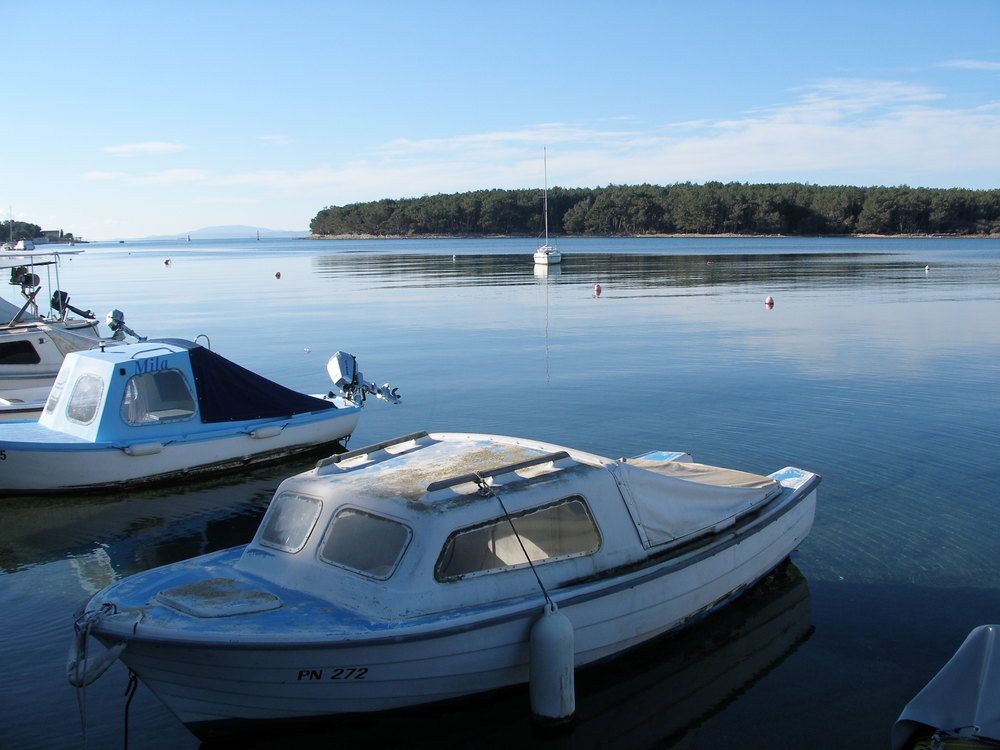
Last Sunday, the road took me to Krk, one of the leading island destinations in Croatia. Nestled in Kvarner bay, a short ride away from Rijeka, Krk makes for a perfect destination for a day-trip when you find yourself in dire need of some Adriatic-themed downtime. While a single day will suffice to pack several od the island's towns in a round trip, we'll leave that entire palette for another time and focus on my favourite stop of the day: Košljun.
The islet of Košljun is situated right across Krk's Punat town, accessible by boat only. To be fair, it's much easier to reach in summer months, with two private companies offering 10-minute boat rides from Punat to Košljun every half an hour. But even out of season, it only takes a phone call or an email to book a ride to this splendid little gem - even better, as you won't have to share a boat with 30 other people and will have the entire islet to yourself.
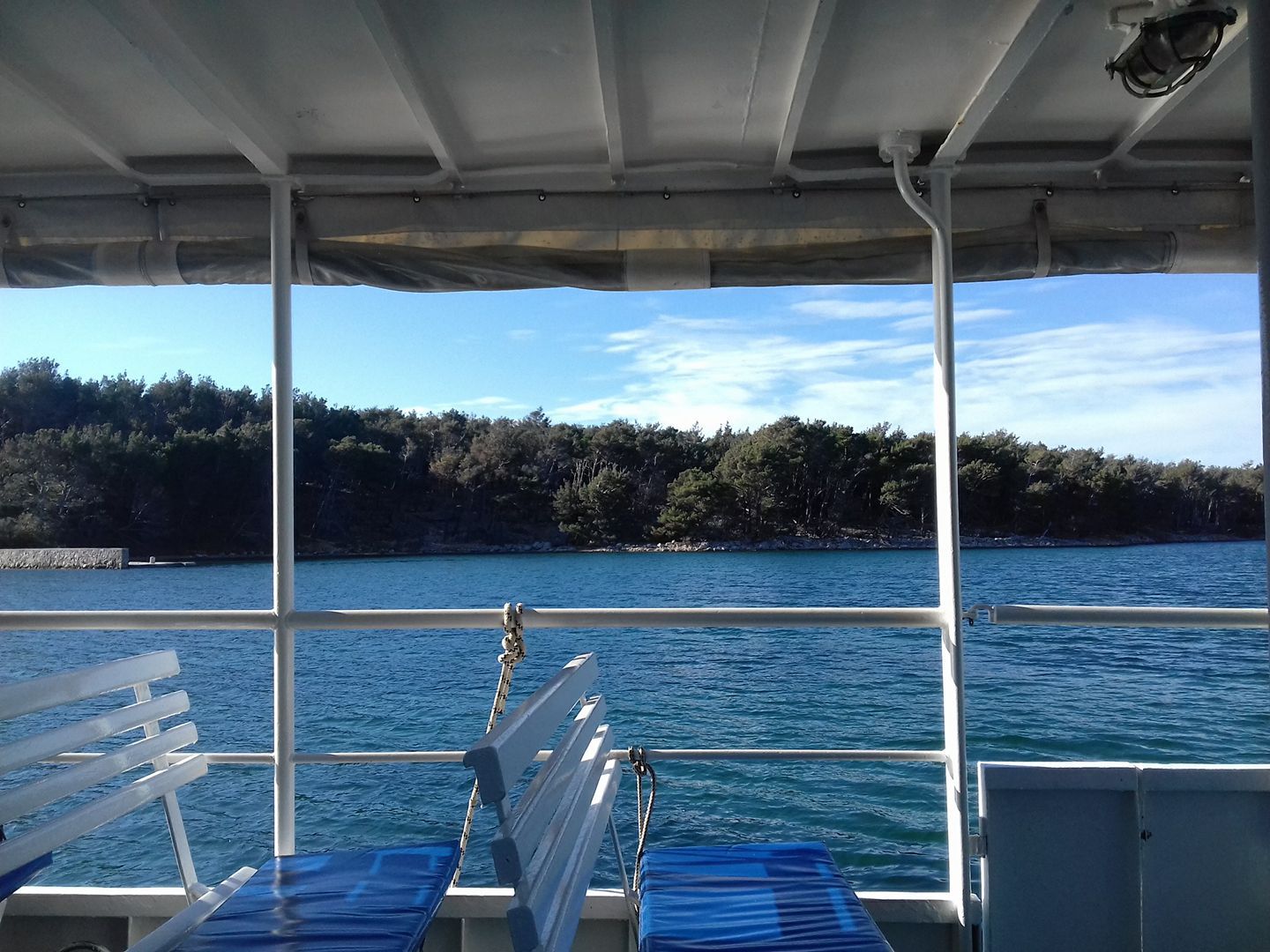
While I'm an ardent advocate of 'the more, the merrier' philosophy, Košljun is best experienced with as few people around as possible. I was lucky enough to be island-hopping with a small group - not enough visitors to spoil the islet's tranquil ambiance, but just enough to share my impressions with.
And trust me, you'll be eager to share the experience with someone. From the moment you step onto the pier to the last time you turn around to rest your eyes on the enchanting landscape, Košljun will seem like a mirage - a place frozen in time, otherworldly in its stillness and silence.

Košljun was first inhabited in the ancient times, providing a perfect location for a summer villa. The islet reportedly owes its name to this first structure, with the Latin term castellum transforming to Košljun over time. A Benedictine abbey of St. Mary was built on the island in the 9th century, including a Romanesque church whose foundations were uncovered under the present Franciscan church.

The Franciscans arrived on Košljun from Krk, owing to the noble family Frankopan who appealed to Pope Nicholas V to grant the Franciscan order the right to take over the abbey in the 15th century, following the passing of the last Benedictine abbot Dominic. A generous donation from prince Ivan Frankopan and his daughter Marija Katarina allowed for the existing church to get expanded and renovated, then consecrated as the Church of the Assumption of Mary.
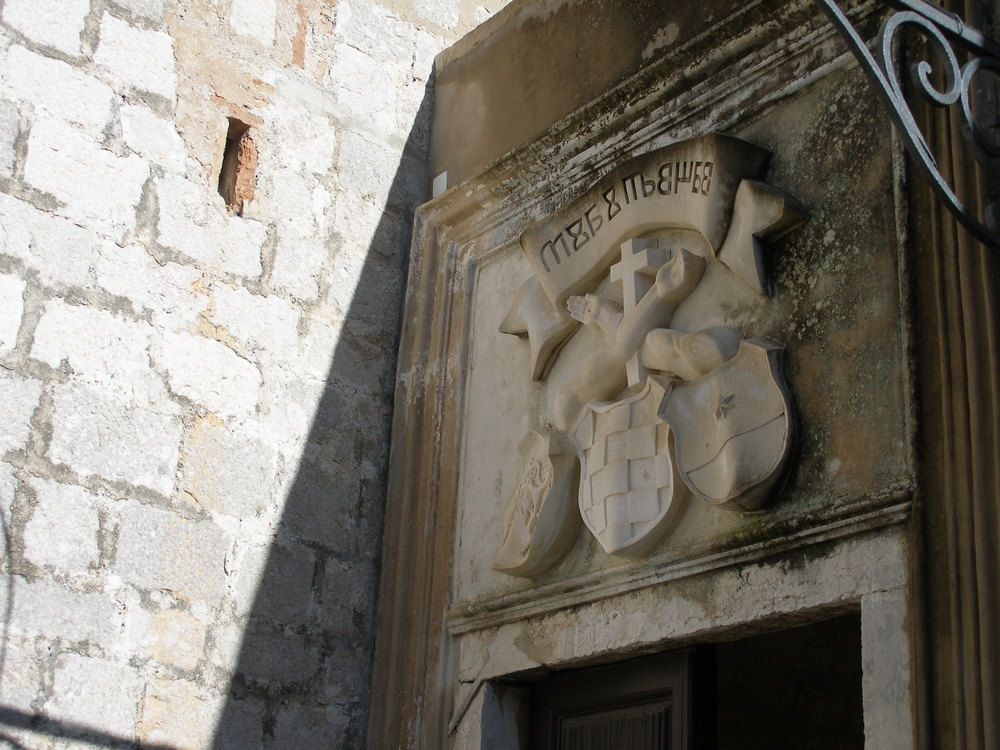
Glagolitic inscription reading mir i dobro, the Franciscan motto peace and all good in Croatian
Thanks to the Franciscans, the tiny island developed into a thriving hub of culture and education. If you've been following our travel pieces lately, you might remember this nod to their impressive collection - around 30.000 books, 100 of whom are incunables. A rare edition of Ptolemy's Atlas printed in Venice in 1511 is part of their fund, as well as a priceless collection of illuminated music manuscripts originating from the Middle Ages.
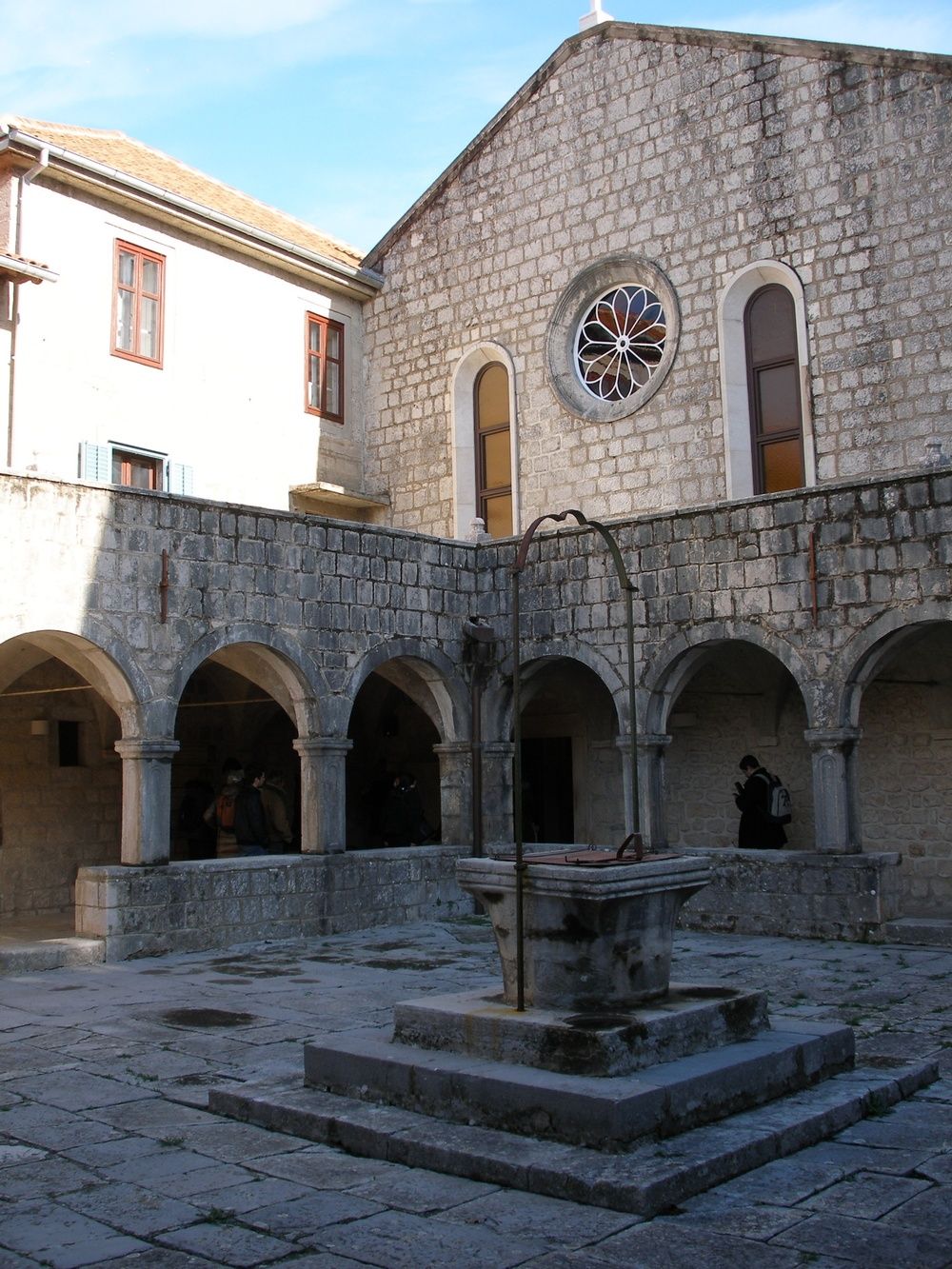
The church is home to the biggest painting in all of Croatia, painted by the Venetian master Francesco Ughetto in 1653. An awe-inspiring depiction of Heaven, Purgatory and Hell measures 9,7 metres in width and is put up on the triumphal arch above the altar:

Take a short break in the peaceful cloister...
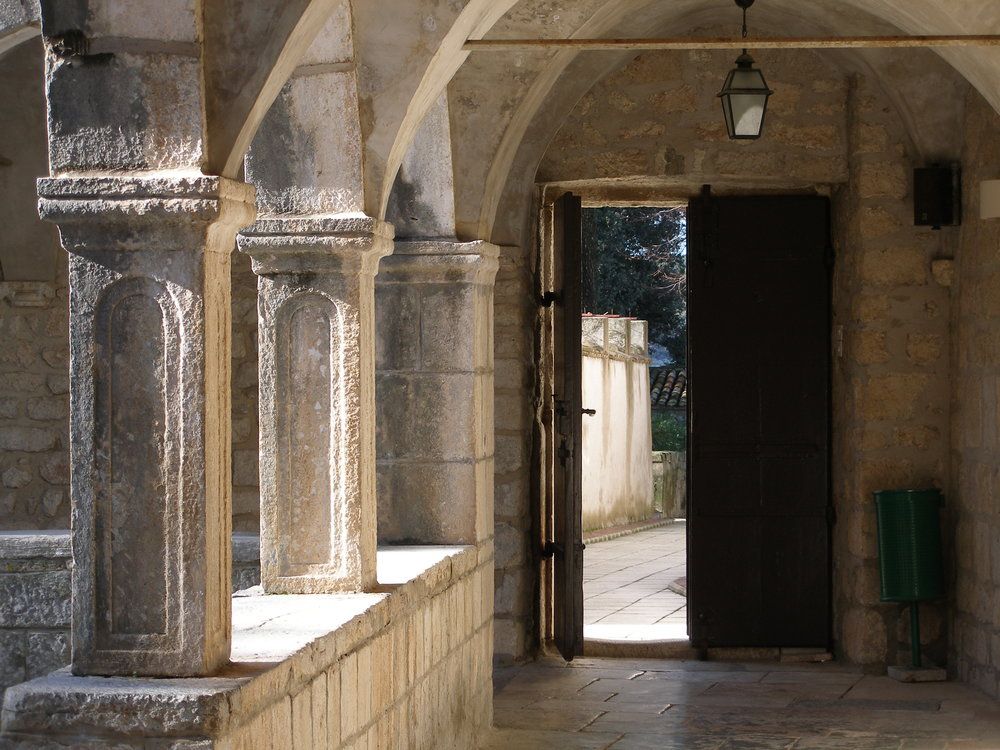
...and go on to explore the four museums housed in the complex. There's the Archaeological Museum which includes a collection of prehistoric ceramic bowls and ancient amphorae, as well as several ancient tombstones, all of the items originating from Košljun and Krk island.
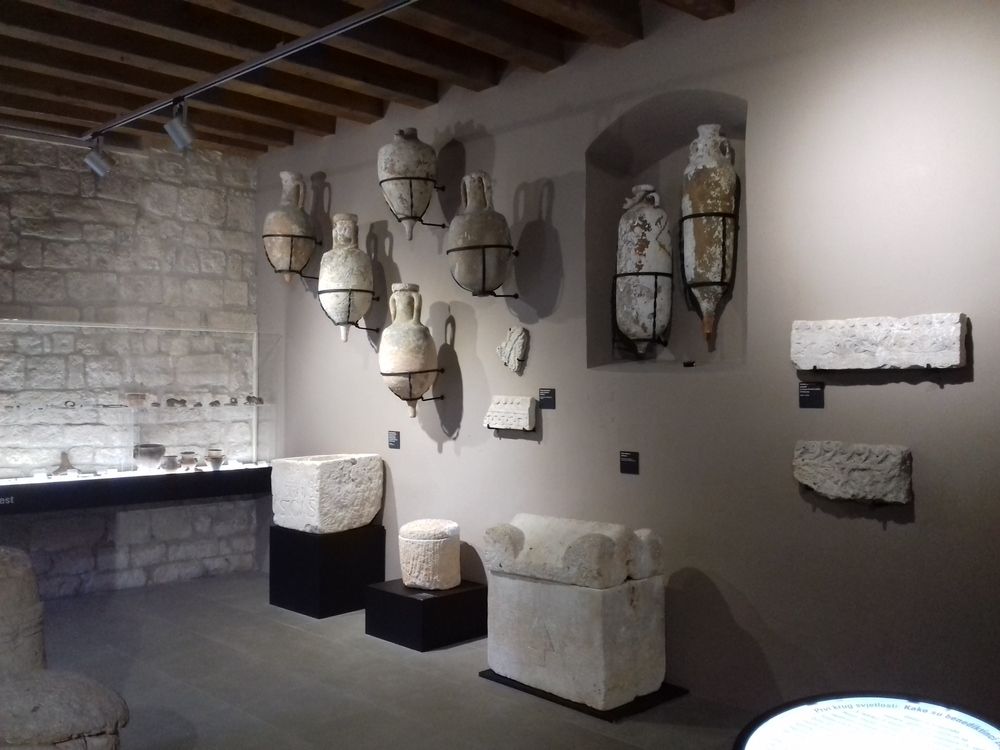
The former church of St. Bernardino of Siena nestled within the monastery complex houses a valuable sacral collection composed of Gothic, Renaissance and Baroque works of art and liturgical objects.
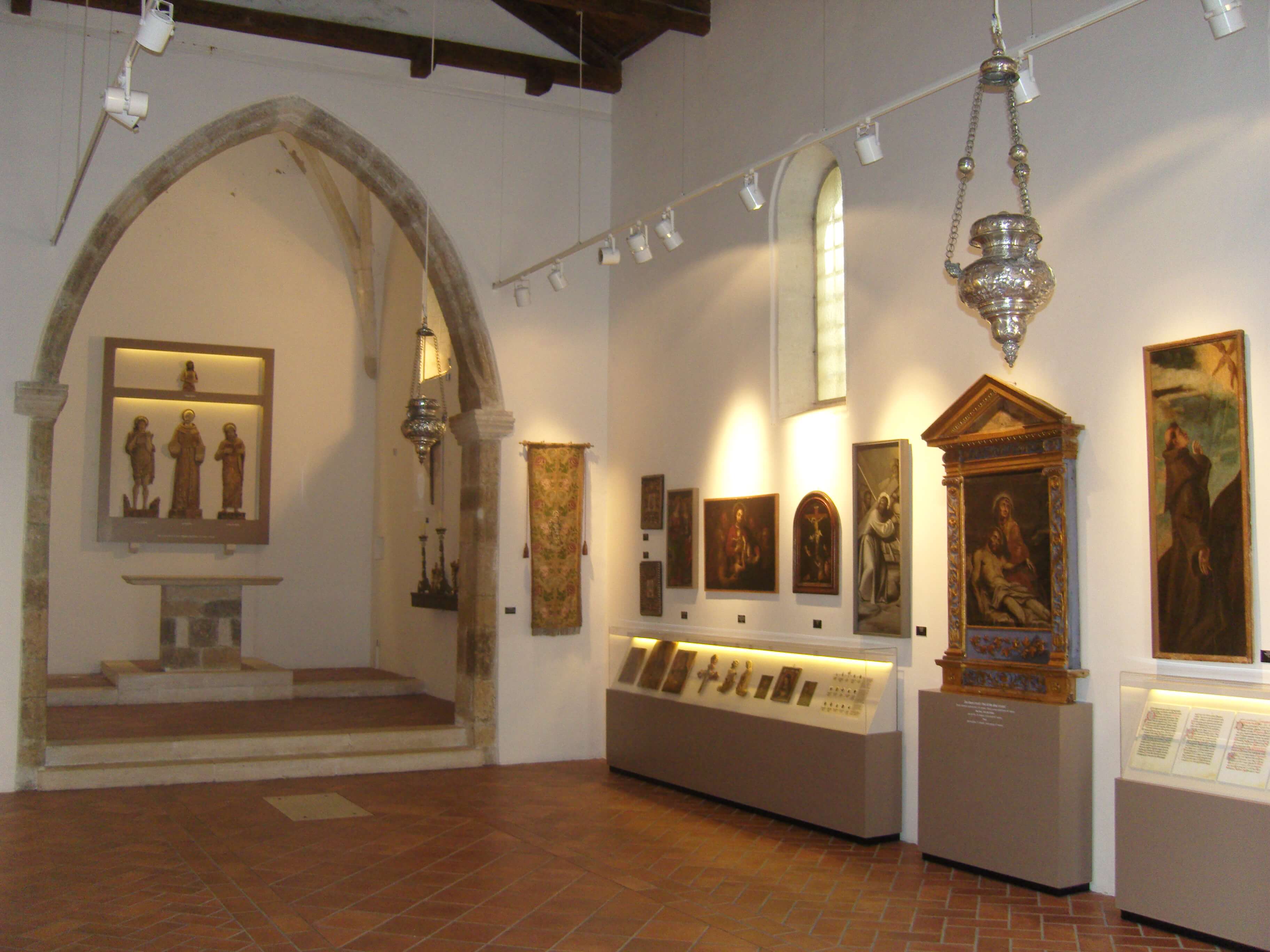
This art historian was delighted by a simple, yet convenient way some of the items were displayed, allowing one to see all of their intricate details:

And then on to the Ethnographic Museum which came to life owing to friar Nikola Španjol who has spent the 70s diligently collecting ethnographic items and folk costumes all over Krk. A truly remarkable effort, contributing to preservation of the area's cultural heritage. There's also an extensive numismatic collection composed of bills originating from dozens of countries all over the world - a delight for many foreign visitors who like to stop by the colourful display and look for their country's currency.
For a final surprise, the adjacent room - walk through the open door, and you'll be taken aback by the sudden change of scenery. The Natural History Museum boast a sleek modern design, an amazing display aiming to educate the visitors on the local flora and fauna. And what a flora! Four hundred plant species are thriving on this little parcel of land.
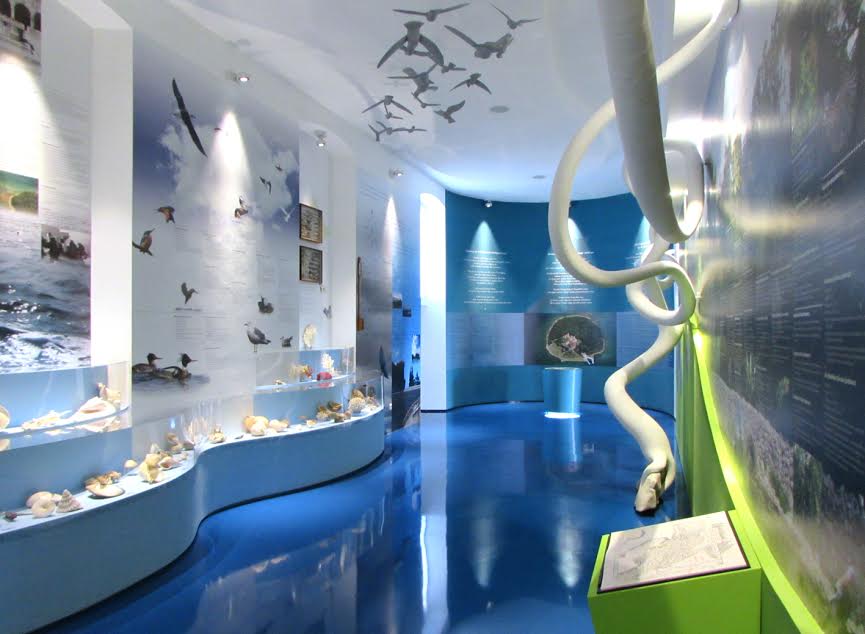
A splash of white, blue, and green to feast your eyes on, inspired by The Canticle of the Creatures penned by St. Francis of Assisi, the patron saint of the Franciscan order. The colours are related to air, water and land respectively, making for a lovely symbolic tribute to St. Francis and the richness of natural treasures of Košljun.
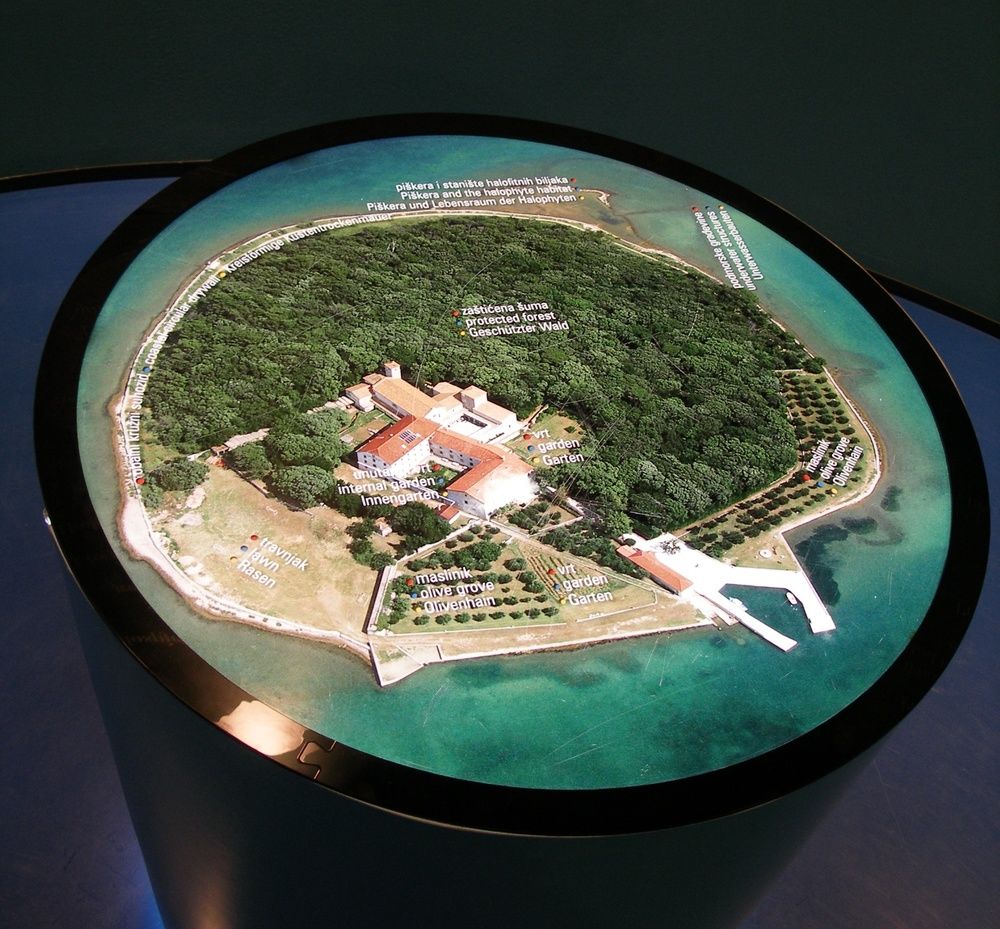
The Franciscan community on Košljun is currently composed of four members: friars Alfons Orlić, Klement Sršen, Stjepan Žužić and Diego Deklić. Judging by the photos displayed on their website and in the complex on Košljun, they are a spirited bunch in every sense of the word:
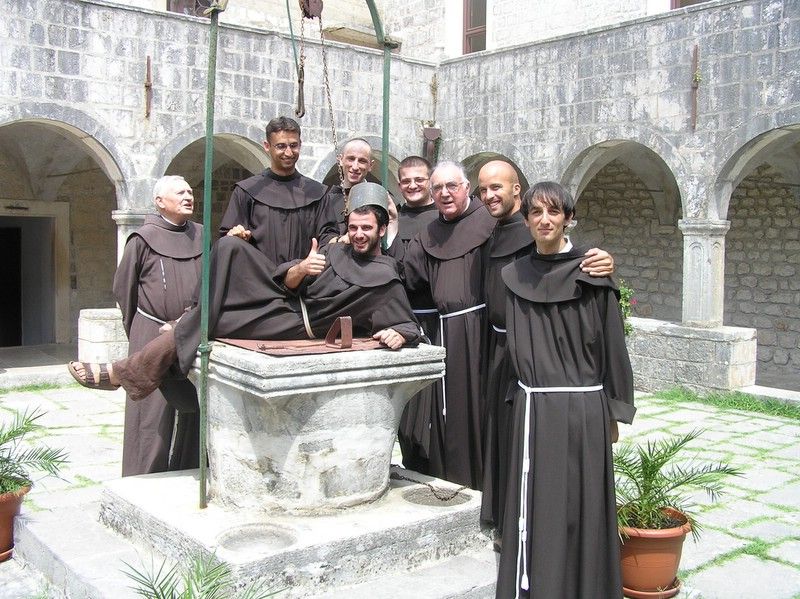
The sacred site enveloped in lush vegetation is a joy to explore and a perfect way to escape the incessant buzz of urban life. Pax et bonum, says the official motto of the Franciscan order - peace and all good. Spend an hour or two on this remarkable island, and it'll be hard to see the world any other way... at least for a little while.


